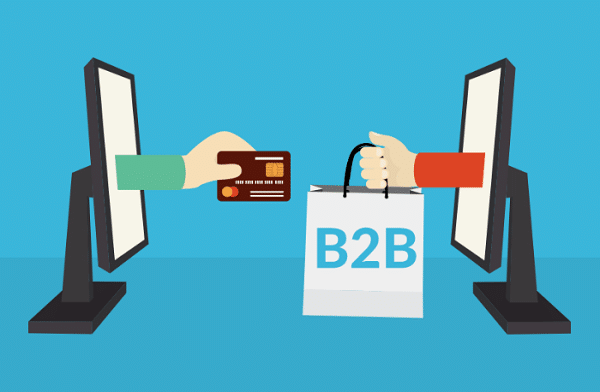Investing in eCommerce is essential; it is something that increases your sales, cuts down your costs, and improves productivity. And, as COVID-19 has demonstrated, it could make a difference in whether a business succeeds or fails. The B2B eCommerce market is a $1.9 trillion sales generator in the United States alone, and the pandemic is already giving that number a significant boost.
Many eCommerce systems promise many benefits, such as customer growth, increased sales, reduced costs, higher-order values, and so on. Yet, like all business decisions, selecting an eCommerce platform squarely depends on its ROI or return on investment. From researching a good ROI for eCommerce to choosing the right ROI benchmarks, business leaders, and IT, teams need to get familiar with eCommerce ROI before selecting a platform or using digital transformation consulting services.
Why calculate eCommerce ROI?
Performing an ROI calculation for a B2B eCommerce platform is no different from analyzing any other software’s feasibility. It should tell you whether you’ll achieve the desired revenue gains and how long it will take to do so. The standard B2B eCommerce ROI model formula looks like this:
(Profit from the Investment – Investment) _______________________________ X 100 Investment
Since your eCommerce ROI depends on many different factors, your eCommerce ROI model should address several data points and assumptions about your business. The calculation will give you a total cost of ownership: the overall amount of money you’ll spend on the software plus hosting, maintenance, or upgrades. You may also need to pay up to raise limits on SKUS, orders, transactions, add integrations, and so on. Your ROI calculation will also tell you the cost of doing nothing. That includes the potential cost savings, revenue gains, and other business improvements resulting from your eCommerce platform implementation.
What impacts your eCommerce ROI?
Many things will impact the ROI of your eCommerce project. Here are some of the things to keep an eye on:
Annual sales revenue
Your annual sales revenue is the gross amount realized from sales or the amount of cash your business receives from your customers over the course of one year. Some businesses use the terms “sales” and “revenue” interchangeably, so it’s important not to confuse the two. Revenue typically encompasses all income sources other than sales proceeds – such as equity deals and operating revenue, which are not counted as sales revenue.
Annual number of customers
Specifying the number of customers that purchase from you each year makes for a more accurate projection of sales numbers. Whether your customer base is large or small, an eCommerce solution makes it easier to sell to them.
Annual number of orders
When you know the total number of orders, you can combine this with the number of customers to determine the average number of orders a customer makes. Knowing sales revenue, we find out the average order value (AOV). Both of these help in the ROI calculation to accurately measure the long-term value of individual customers.
Total costs of ownership
When evaluating your eCommerce solution, keep in mind that your solution’s purchase price won’t tell you the whole story. The Total Cost of Ownership (TCO) is a better indicator of the ongoing expenses you will incur over the long run. Aside from the purchase price and annual licensing costs, the TCO also includes implementation and maintenance costs, extras such as customer service, integration, or raising limits on SKUs, transactions, users, or bandwidth.
What are the benefits of B2B eCommerce?

Moving your operations online with eCommerce increases efficiency and reduces costs. Here are some benefits you can expect to see when calculating the return on your investment.
Increase market share
By moving online, sellers can extend their domestic and global outreach without investing in new offices and additional personnel. Best in class eCommerce platforms allow the management of multiple organizations and brands as well as supporting various sites from a single central admin console.
Improve user experience
Mobile makes up a large share of online traffic. B2B buyers are increasingly ordering and reordering out of their mobile devices. And, unlike physical stores, an online store is always open, so your revenue-generating timeframe is maximized, without the need for additional staff or locations in different time zones.
Improve competitive advantage
Digital commerce is a great equalizer, where even the smallest players can make a difference with speed, reliability, and great shopping experiences. Look for B2B eCommerce systems that integrate with your ERP and fulfillment centers and have a robust API that allows you to streamline customizations.
Improve time-to-market
An eCommerce platform that’s ready to use out-of-the-box will allow you to spend less time developing these features and get your products out to market faster. Look for a platform with features like multi-website, and self-service, ordering, and payment processing capabilities.
Reduce costs per order
Some businesses have a complicated ordering process specific to each customer. By delegating it all to a customer-facing eCommerce website, businesses can save time and money. These portals help customers access stock availability, manage orders, and reorder products in real-time.
Reducing operating costs
With the help of digital commerce, businesses can minimize expenses associated with errors with manual order entry and processing. Wrong products, wrong locations, and similar misunderstandings become a thing of the past. Instead, reps can spend more time on sales and building customer relationships.
Reduce customer service costs
When reps spend their time answering questions customers could find themselves, your support costs start creeping up. A B2B eCommerce system works around the clock with personalized self-service for the fulfillment of every customer, regardless of where in the world they may be.
Reduce marketing costs
Digital commerce stores help slash spending on producing and distributing hard-copy sales, marketing, and specification materials. By offering personalized marketing materials or catalogs online, you can scale back or eliminate the need to prepare and mail expensive paper catalogs.
Improve time to market
Your B2B eCommerce implementation can take anywhere from three months to a year, depending on your solution’s complexity. Time is an important metric to keep in mind, as it impacts the overall cost of your implementation, directly impacts how quickly you start selling, and in turn, your return on investment.
Boost sales and average order value
Most importantly, an eCommerce system helps you grow the number of orders you receive and help you identify strategies that work to increase the average order value (AOV). Many eCommerce features such as product suggestions, cross-selling, and up-selling features help increase AOV, reflecting positively on your ROI.
Conclusion
Digital commerce adds value to all participants – whether it’s your sales rep, supplier, vendor, or the end-customer. However, your B2B eCommerce ROI calculation will only be as effective as the data that’s fed into it. Start with a basic projection and adjust your data in the next ROI calculation. It will be easier to identify new revenue opportunities, areas where you can cut costs, and where you can improve staff productivity. This will help you evaluate multiple digital commerce scenarios, fine-tune your strategy, and select the optimal solution for your business.
Read Also
- How to Build Your First Profitable eCommerce Website
- 8 Must-Have WooCommerce Plugins
- 5 Ways to Deliver Excellent and Consistent Customer Service
- What Your Business Needs To Better Reach Your Target Audience
- Internet Marketing Strategies to Make Your Business Stand Out in 2021
- Shopify Vs WooCommerce
- How To Choose A Right WordPress Development Agency

